Review: Profile-Design DRV/A bar, 1/ZeroSeven stem, 1/Zero seatpost
We’re big fans of Profile-Design at Slowtwitch, though that typically focuses on the aerobar front. Today, we’re not talking about aerobars, but rather drop handlebars, which is very important to Slowtwitchers, most of whom spend significant time on a road or gravel bike. We covered some of the tech behind Profile’s unique system for sizing bar drops, including their wonderful DRV Sizer Bar for professional fitters. Today, we’re reporting on how the DRV system performs in the real world, having used a full road cockpit setup for several months on two bikes.
Profile-Design DRV/A Drop Bar
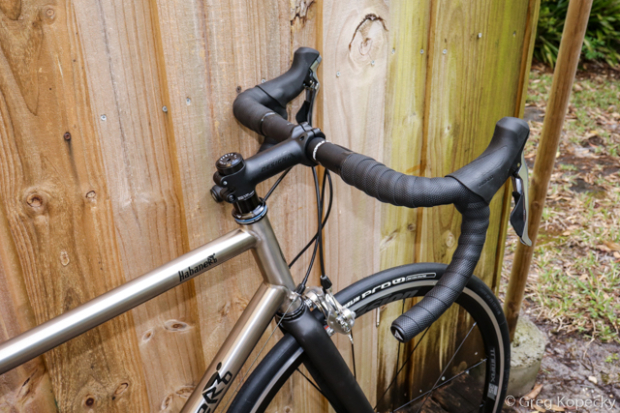
The world of drop bars has changed quite a lot in the last two decades. Gone are the days of super deep drop, traditional round drop, and early-2000’s ergo drop bars (for the most part), with both reach and drop dimensions becoming smaller and more rider-specific. Much of the market share has swung, too, with brands like Profile-Design, FSA, and Zipp taking away what was almost wholly owned by companies like ITM, Deda, and Cinelli. The companies that succeed in a big way in 2019 are those that focus on fit, and having enough options for everyone. Consumers understand this, and are less concerned with the selling points of exotic materials or saving a few grams.
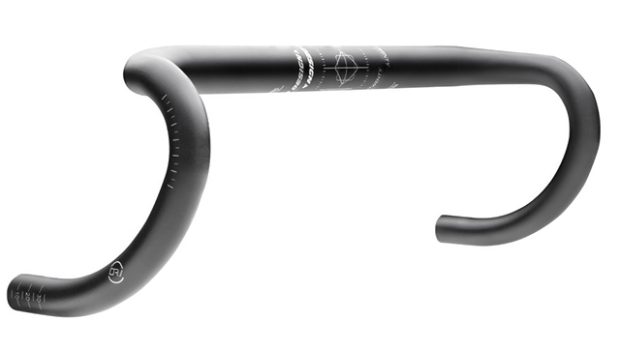
I was among those reluctant to make the switch to shorter, shallow drop bars. I’m tall (6’1”) and I have long-ish arms, so I reasoned that I should use a deep drop bar. I was also afraid that switching to a shorter bar reach would mess with my fit too much, since I knew what my proper combination of top tube and stem length were (this was before the days of Stack and Reach).
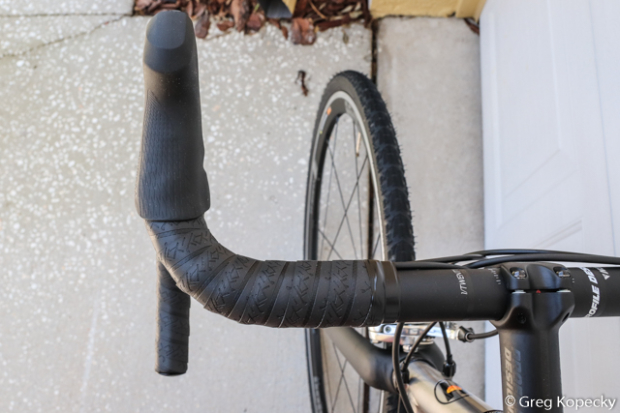
I won’t bore you with the details of the timeline, but rather the conclusion: Once I finally tried them, I was hooked. So your reach is shorter? Big deal – use a longer stem to correct. Or, you might not even notice the small change in reach to your bars. Or – if you’re like me – by the time you try shorter reach bars, you’re older and feel more comfortable with less reach. Finally, the shapes and ergonomics of brake hoods have changed quite a lot over time, so even if you’ve used ONE drop bar for the past 35 years, your effective reach has changed over time with each shifter and brake hood update.
TLDR (too long, didn’t read)? You should try some newer bars one of these days. They won’t bite.
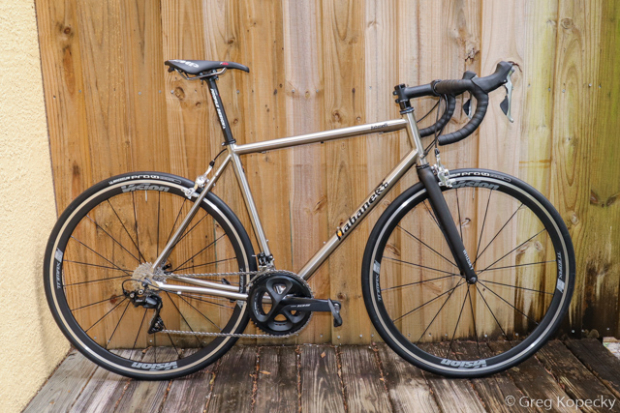
My first exposure to the newer bar system from Profile was a handful of years ago, using their Legra SS bar on a steel road bike that I was testing. That bar isn’t around anymore, and has been replaced by the DRV/A – essentially a mid-high-level round aluminum bar. No aero shapes and nothing too fancy here – which is exactly why it appeals to me. I like testing things that normal people on normal budgets will buy.
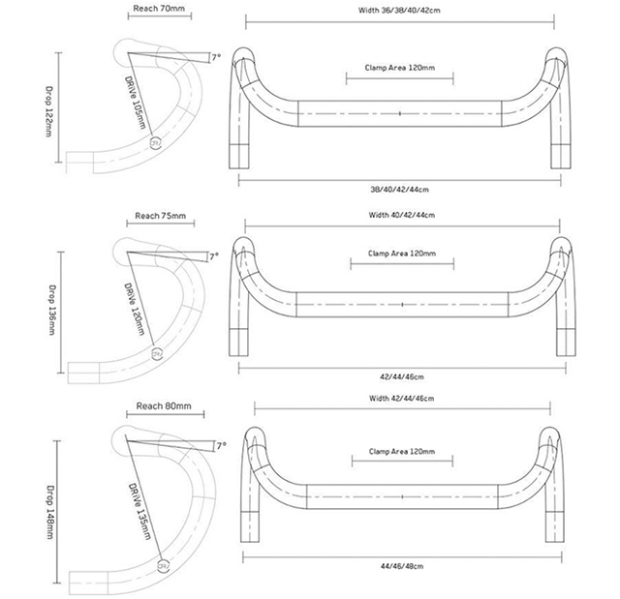
The key to their DRV system is that it doesn’t use the traditional drop measurement that you’re used to, which measures to the center of the bar drop at its deepest point. Rather, the DRV system triangulates what they’ve deemed as the actual hand position you’ll use. Our deep dive into the DRV system explains this in detail (linked in the first paragraph and at the bottom of this article). I like this idea, but need to emphasize the simple fact that it’s different than what most of the industry does. If you’re bar shopping, keep in mind that a “120mm drop” from any other brand is not the same as a 120mm DRV bar (which has a 136mm drop). Profile provides full schematics on their website (i.e. the image above), so be sure to check this before buying.
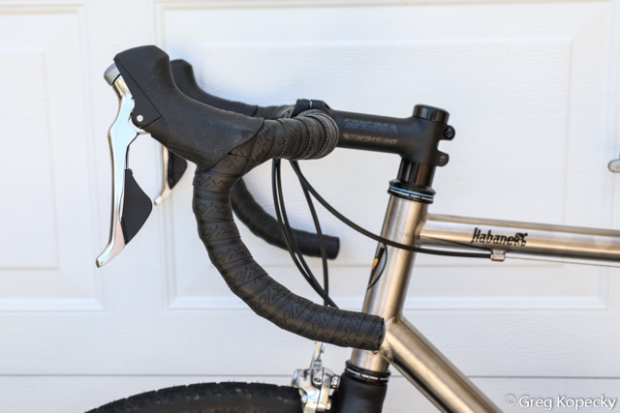
My steel bike from years back used the shallowest option (effectively the current DRV 105), along with a 42cm center-to-center width. When building up my new Habanero road bike this year, I opted for a wider 44cm bar, and went with the next deepest drop (120 DRV, or 136mm drop). I like the wider bar, and I like how both Shimano and SRAM brake hoods integrate nicely – though I’m almost always up at the very top of the adjustment range. If you haven’t tried angling your hoods up more, give it a shot. I can’t go back, and actually angled mine up a bit more since these photos were taken. Profile nailed this aspect of the bar, and it dumbfounds me how so many competitors haven’t figured it out yet.
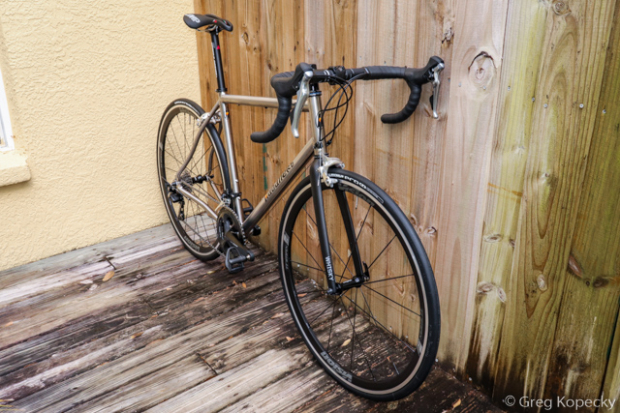
That said, I must admit that I really do prefer the shallower drop size of my older bar. Perhaps I’m just a wimp, or maybe I’ve had my neck cranked too much training Brazilian jiu-jitsu, but I don’t find myself comfortable with anything but a very shallow drop. The trouble is, Profile doesn’t make a 44cm width with a 105 DRV drop… only 120 and 135. I understand the logic that drop size should trend with bar width, and they can’t handle unlimited SKU options. However, with the way the market is trending, I think it makes sense to offer more shallow drops across all widths – especially with how things are trending in gravel (wide bars, and very shallow or flared drops). I’d be surprised if we don’t see Profile make this change in the next year or two.
Profile-Design 1/ZeroSeven Stem and 1/Zero Seat Post
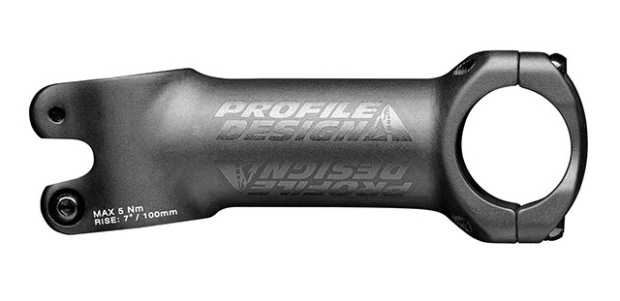
The 1/ZeroSeven is a no-nonsense 6061 aluminum stem using a 7-degree angle (hence the “Seven” in the name). It has a four-bolt faceplate and steel hardware, and weighs in at 167 grams in 100mm length. They make a nice range of lengths, from 60mm to 130mm. It works great, and the seven degree angle will be appropriate for most riders. If you need a larger drop or rise, they also offer a 17-degree version, called the 1/Seventeen.
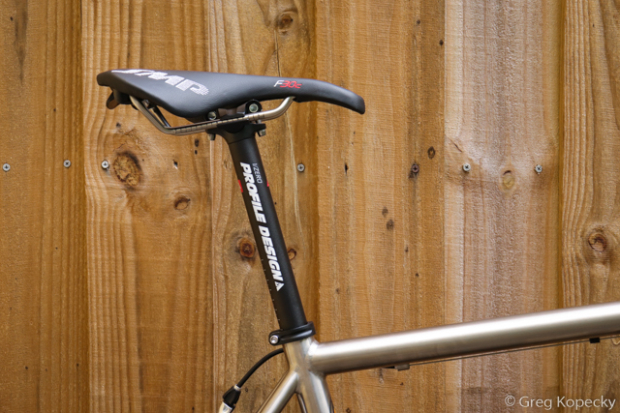
On the seatpost front, I used the 1/Zero aluminum post in 27.2mm diameter and 350mm length. Profile-Design makes offset versions, including their mega-offset Fast Forward model for drastically changing your effective seat tube angle. I opted for the zero offset because my current road saddle of choice has its max width quite far back, and tends to work better with zero offset posts (Selle SMP Avant, though the bike is pictured here with an F30C). The 1/Zero has a very nice infinite adjustment system, meaning that you can make angle adjustments as small or large as you’d like. Once you use a post like this, you won’t be able to go back to cheaper systems that have notched angle adjustment.
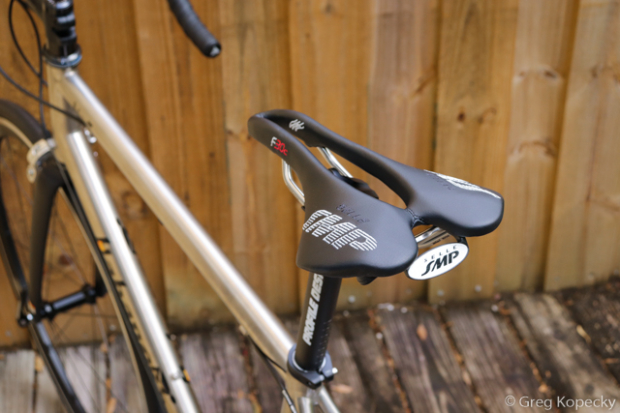
The only thing I’ll caution you on for this stem and seat post applies to anything using steel hardware. Steel is great. Steel is durable. But steel can also rust. During assembly, I remove all hardware and spray it down with rust inhibitor, such as WD-40 Spray and Stay Gel Lubricant. It won’t last forever, but it’s an easy ounce of prevention that helps to delay rust formation. Ti hardware avoids the rust problem, but it’s more sticky and finicky when used for bolts, so I prefer steel.
All of the products reviewed today are currently available from Profile-Design directly, or through your local shop and fitter.
DRV/A handlebar – $57.99, 305 grams
1/ZeroSeven stem – $57.99, 167 grams
1/Zero seatpost – $52.99, 250 grams


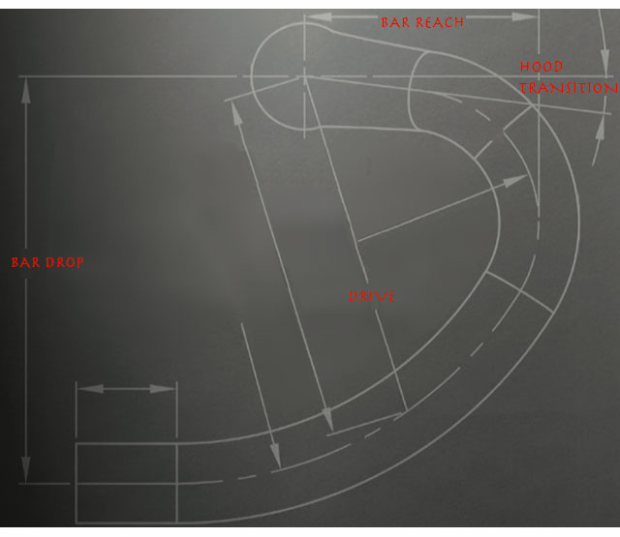
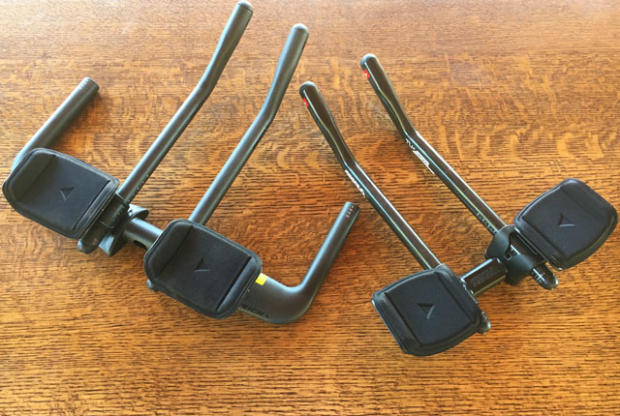
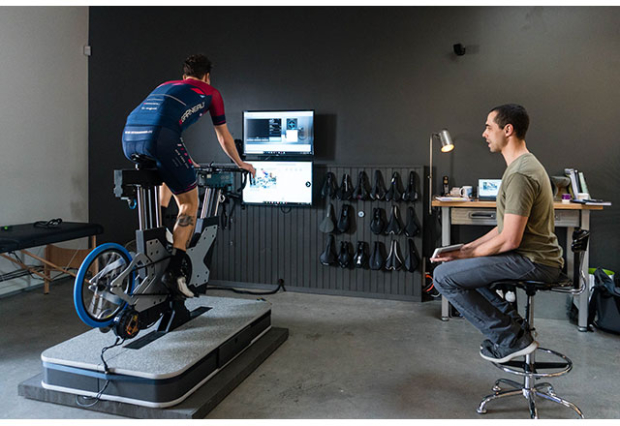
Start the discussion at forum.slowtwitch.com